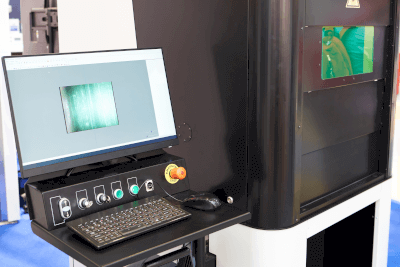What Is Microfabrication?

Microfabrication is a process that operates on the micron scale (1 mm to 0.001 mm), bridging the gap between conventional machining and nanotechnology. It focuses on micron-order precision, often employing laser processing for its ability to focus on extremely small areas with adjustable parameters like laser output and pulse width.
Uses of Microfabrication
Microfabrication is utilized in various fields, particularly in creating intricate components from materials like metals, resins, and engineering plastics. Its applications span the medical, aerospace, semiconductor, and electronics industries, among others.
- Titanium Materials: In the medical field, used for implants and dental components, and in aerospace for part machining.
- Aluminum Materials: In LCDs for thin-wall processing and semiconductor manufacturing for precision component fabrication.
- Stainless Steel Materials: For producing fine mechanical parts in electron beam equipment, medical devices, and semiconductor moldings.
- Engineering Plastic Materials: In semiconductor production for manufacturing and inspection jigs, and IC inspection for connector processing.
- Machinable Ceramics: In LSI chip wafer inspection for fabricating probe cards.
Structure of Microfabrication
Laser microfabrication employs short-pulse lasers like nanosecond, femtosecond, and picosecond lasers. These lasers enable microscopic fabrication while minimizing thermal damage through a process called “ablation.”
Types of Microfabrication
Microfabrication methods vary, with ultra-precision microfabrication using NC machine tools being a prominent example. This includes micro-hole machining, microgroove machining, precision microfabrication, complex surface machining, and mirror finish machining on various materials.
Choosing Microfabrication Techniques
Selecting appropriate microfabrication techniques involves considering the precision of tools and equipment. This includes selecting high-precision machining tools, maintaining a stable temperature environment to account for material shrinkage, implementing vibration countermeasures, and using high-performance CNC image measuring instruments for accurate quality assurance.